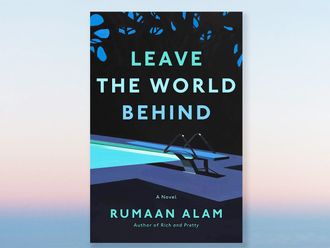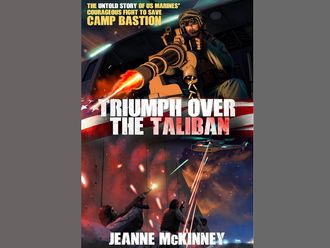A modern train line going across from one end of the city to another, following a fancy bus service running on elevated platforms and a future theme park dubbed by some as Pakistan’s Disneyworld. Those are just some elements at the centre of the emerging picture for Lahore — Pakistan’s most historic, big city. The modernisation of course is central to Lahore’s other claim to fame as the home of Prime Minister Nawaz Sharif.
The Chief Minister of the Punjab province, of which Lahore is the local capital, is none other than Shehbaz Sharif, the prime minister’s younger brother. The relationship between the two is such that the younger sibling was once dubbed as Pakistan’s Bobby Kennedy — the right-hand man and sibling to slain former US president John F. Kennedy.
But behind the glossy image of Lahore lies a number of debatable points. That parts of its history may lie in absolute tatters as excavation work proceeded in recent months to lay the track for the new train line has easily left many Pakistanis in complete disbelief.
Once celebrated by historians for its rich legacy, the promise of modernisation also risks wiping out Lahore’s heritage, not to forget Pakistan’s heritage. These important historical milestones of Lahore range from the city being an important centre of trade, arts, administration and learning in Mughal India to becoming the seat of the only Sikh empire in history — powerfully led by Maharaja Ranjit Singh. Some of Lahore’s ancient churches equally stand out as reminders of its colonial linkages to the British Raj as too the widely noticeable Kim’s gun, first brought to fame in Rudyard Kipling’s popular novel.
Yet, to expect Pakistan’s present-day rulers to care for matters such as history would certainly be asking for too much. So recklessly pursued was the need to modernise this city that Pakistan’s rulers became alerted to a treasure of history in acute danger of being demolished, only after the fancy train project met with opposition from local activists. The voices of protest received official promises of ‘leaving no stone unturned’ — a cliche — to protect important sites. Yet, part of the loss may have already been caused. If indeed the route of the train line is changed to protect historical sites, a compelling question will indeed remain unanswered. Is there a cost escalation in sight with this fixing of one of the many modernisation plans for Lahore? If so, the added burden will only fall on ordinary Pakistanis.
What is happening to Lahore is indeed no different from the direction getting set for the future of Pakistan. Sharif’s well-known passion for fancy transportation networks goes back to his first tenure in the early 1990s. A six-lane motorway — Pakistan’s first of its kind — was launched then, alongside the first-ever national taxi service. Brand new vehicles, including some luxury ones, were handed out to unemployed young men to earn a living and pay off their debts. Given that the conditions surrounding the taxi loans were far from tight, some were seen a few years later being driven around in neighbouring Afghanistan and comfortably away from being foreclosed by the banks.
In his third tenure, which began in 2013, Sharif has embarked on expanding the highway network. His ruling coterie holds the fancy Lahore-Islamabad motorway as an example of success worth emulating. Yet, its an imperfect model in a country with a large community of illiterates mired in extreme poverty. Their children suffer in ways ranging from malnutrition to virtually no access to half-decent health care. Taken together, their number may have exceeded 65 million or roughly one-third of Pakistan’s total population of about 200 million, which lives below the poverty line.
For the rulers, it is convenient to focus on the emergence of a new country surrounded by fancy train lines and high-speed road networks. Occasionally, the rationale to back these projects is built upon the promise of a future led by faster economic growth and opportunities for ordinary Pakistanis. Yet, the narrative that’s meant to be carved out stands detached from Pakistan’s powerful reality of poverty-stricken neighbourhoods.
Changing this narrative may not just be about admitting what can easily be seen as an all-too-visible policy failure. The change has to be in terms of a mind-set that understands Pakistan’s past, present and future. However, Pakistan’s ruling structure today appears to be incapable of grasping the basics that are essential to safeguard the country’s most vulnerable mainstream population. Pakistan stands the risk of being driven by material targets rather than human ones. A country where the process of learning and enlightenment remains the missing element around the ruling structure, it can hardly qualify as being progressive.
A truly progressive Pakistan can begin to be built if the ruling elite were to launch a nationwide and robust campaign to empower the government-funded school system. Notwithstanding official claims to fame, evidence suggests the presence of schools in today’s Pakistan where almost entire premises have effectively become the personal property of wealthy individuals. A similar tale of woe surrounds health care. A popular anecdote says patients entering government hospitals must do so at their own risk, with the danger of returning home with newer ailments.
Given such a dismal background, the destruction of Lahore’s history is hardly surprising. Why should anyone care about the past as Pakistan’s present-day rulers press ahead to pour concrete over a rich legacy, in their quest to build a new one of their own with brick and mortar.
Farhan Bokhari is a Pakistan-based commentator who writes on political and economic matters.










